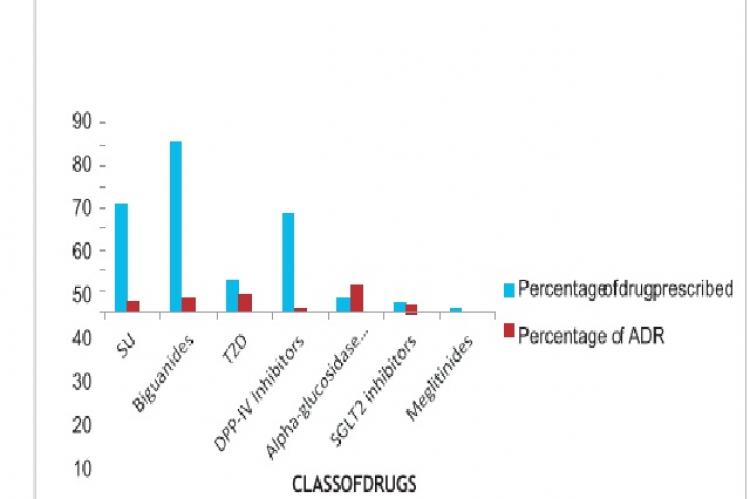The study was to evaluate and analyse ADRs in type II diabetic patients. Oral anti-diabetic drugs were evaluated prospectively over a period of six months in a tertiary care hospital located in north Malabar region. They were evaluated for incidence, frequency, severity and causality. ADR causality was graded according to WHO-UMC scale and Naranjo scale. Severity according to Modified Hartwig and Siegel scale and preventability based on Modified Schumock and Thornton Scale.A total of 58 ADRs were reported from 460 patients with female predominance over male. Patients undergoing treatment for a period of less than 5 years experienced more incidence of ADR. All the ADRs that were reported of type A and reported in biguanides especially in GI System. The suspected ADRs were assessed for their causality, (52) were probable, (6) possible as per WHO scale. Naranjo scale were(53 ) probable and (5)possible. In Modified Hartwig and Siegel scale (28) were mild and (30) moderate. Modified Schumock and Thornton Scale (58) ADRs were probably preventable. Considering the reporter status ADRs by physician (52), pharmacist (4) and nurses (2). In management of reported ADRs (42) majority of ADRs were managed by directly withdrawing the suspected drugs, in (11) no changes were done, dose was altered in (3) and symptomatic treatment was provided in (2) cases. Considering the outcomes of ADR, 45 of the ADRs were recovered and 13 reactions still continued. Results provide insight to the healthcare providers on the importance of monitoring and reporting ADR with DM.
View:
- PDF (6.39 MB)


